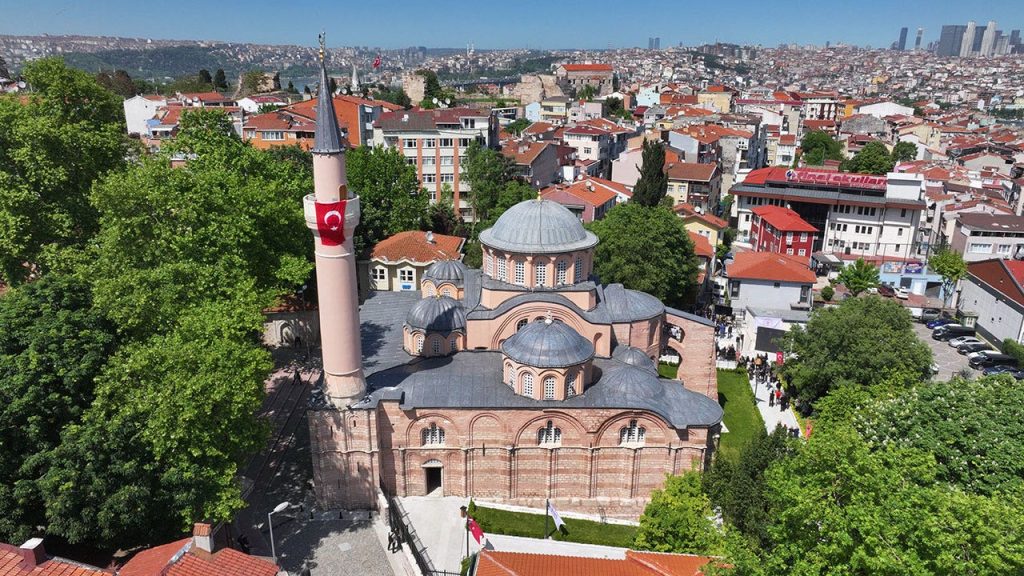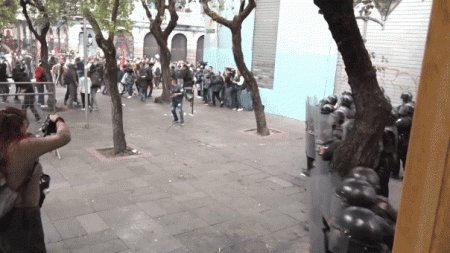Turkey has converted the ancient Chora church in Istanbul into a mosque, following a similar move with Hagia Sophia. Chora, originally a church dating back to the 4th century, became a mosque under the Ottomans, then a museum in 1945. Reactions to the conversion varied, with some expressing disappointment over the loss of museum accessibility. Turkey has opened the ancient Chora church, one of Istanbul’s most celebrated Byzantine buildings, to Muslim worshippers after it was used as a museum for more than 70 years, making it the second such major conversion under President Tayyip Erdogan. Erdogan, a champion of pious Muslims in Turkey and head of a party with Islamist roots, turned Istanbul’s world-renowned Hagia Sophia from a museum into a mosque in 2020 in a ceremony attended by tens of thousands of people. That move was criticized by church leaders and some Western countries, who said reconverting Hagia Sophia risked deepening religious rifts. Erdogan said this was interference in sovereign rights and that he was determined to protect Muslims’ rights.
The original Chora, or Kariye, church dates back to the 4th Century and was turned into a mosque by the Ottomans. It became a museum in 1945 and Erdogan signed an order in 2020 converting it back into a mosque. It reopened on Monday after restoration. The outer halls were preserved as a museum, with visitors able to view the prized mosaics that dot the ceiling unhindered. Curtains concealed the mosaics in the building’s prayer section, in line with Muslim traditions. People were seen lifting the coverings to look at the mosaics of Jesus and of Mary with the infant Jesus. Ferdy Simon, a British tourist, said he would have preferred the building to remain as a museum so that people could see the mosaics and frescoes there. Ugur Gokgoz, a Turkish man who came to pray, said it was Turkish people’s right to use the Chora as a mosque, adding that the artifacts inside the museum were preserved.
A church was first built at the site in the 4th century, but most of the existing building dates to an 11th century church that was partly rebuilt 200 years later following an earthquake. The Church of the Holy Savior in Chora, built near the ancient city walls of Constantinople, contains 14th century mosaics and frescoes showing scenes from biblical stories. They were plastered over after the Ottomans conquered the city in 1453 but brought to light when – like Hagia Sophia – it was converted into a museum by Turkey’s secular republic in 1945. Burcin Altinsay Ozguner, Turkey head of the International Council on Monuments and Sites, said the Chora artifacts are unique and the best way to make them available for researchers is to maintain the building as a museum. “Of course, there are political gains behind it,” she said, adding there was no obvious need for a mosque in the case of both Hagia Sophia and Chora, with mosques right next to them.
Ferdy Simon, a British tourist, said he would have preferred the building to remain as a museum so that people could see the mosaics and frescoes there. “It seems to be a political gambit,” he said, speaking outside the Chora. “It’s a bit of a shame when you see devout women who have come here to pray, and they are told they can’t go into the main narthex area,” he added, referring to the fact that the main prayer section is reserved for males, as in all mosques. Ugur Gokgoz, a Turkish man who came to pray, said it was Turkish people’s right to use the Chora as a mosque, adding that the artifacts inside the museum were preserved. “There was a small section reserved for prayer. At the end, they didn’t tear everything down and turned it into a mosque,” he said.
Turkey’s decision to convert Hagia Sophia and now the Chora church into mosques has struck fears for other holy sites. Erdogan has been criticized for these conversions, with many expressing concerns about religious rifts being deepened as a result. The Church of the Holy Savior in Chora contains unique and valuable artifacts, including mosaics and frescoes, that are important for researchers. However, with the conversion of the building into a mosque, access to these artifacts for non-Muslims may be limited. Despite differing opinions on the conversion, the Chora church has now been opened for Muslim worshipers, following in the footsteps of Hagia Sophia. The political motivations behind these conversions have been questioned, with many feeling that there was no need for mosques in these particular buildings, especially when mosques already exist nearby.













